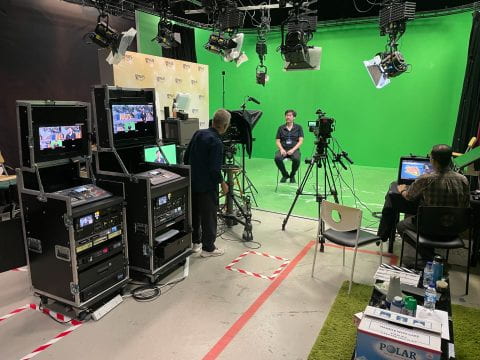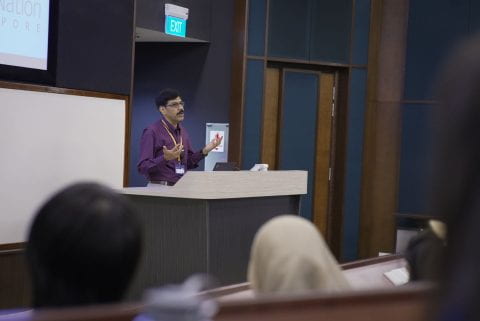Virtual Production has become a transformative force in the Education industry, offering innovative solutions for content creation and storytelling. In CIT, we are at the forefront of integrating cutting-edge Virtual Production technologies into our academic and creative endeavours.
The journey begins with a pilot stage that emphasizes a minimalist setup tailored to a budgeted cost. The Virtual Production (VP) setup at CIT studio comprises essential components such as the Switchblade Machine running Unreal Engine, HTC Vive Tracker, and base stations for real-time camera movement tracking. Leveraging existing studio camera equipment, greenscreens, and mixers, we explore the possibilities of VP within a constrained budget.

Entering the development stage, the team embraces the challenges and adventures that come with pushing the boundaries of virtual storytelling. Our traditional production setup coexists with a more elaborate VP process. The core components involve Lighthouse base stations, Unreal Engine for real-time rendering, and meticulous camera timecode synchronization. The workflow includes pre-filming preparations, such as transferring 3D scenes to ensure seamless integration with the real-time environment. Workstations with ample horsepower enable real-time rendering and efficient execution of complex 3D scenes and ray tracing.

As the virtual production landscape evolves rapidly, CIT is actively evaluating proposals from various vendors. While pricing is a significant consideration, our focus extends to the ease of use of the system, scalability, integrity, and overall impact of the solution. Our commitment to staying at the forefront of technology ensures that our students and researchers have access to state-of-the-art tools and experiences in the dynamic field of virtual production.

The integration of virtual production at NUS signifies our commitment to innovation and excellence in media and technology education. Through a thoughtful combination of minimalist setups, pioneering technology, and a commitment to continuous improvement, CIT aims to contribute significantly to the ever-expanding realm of virtual production.















